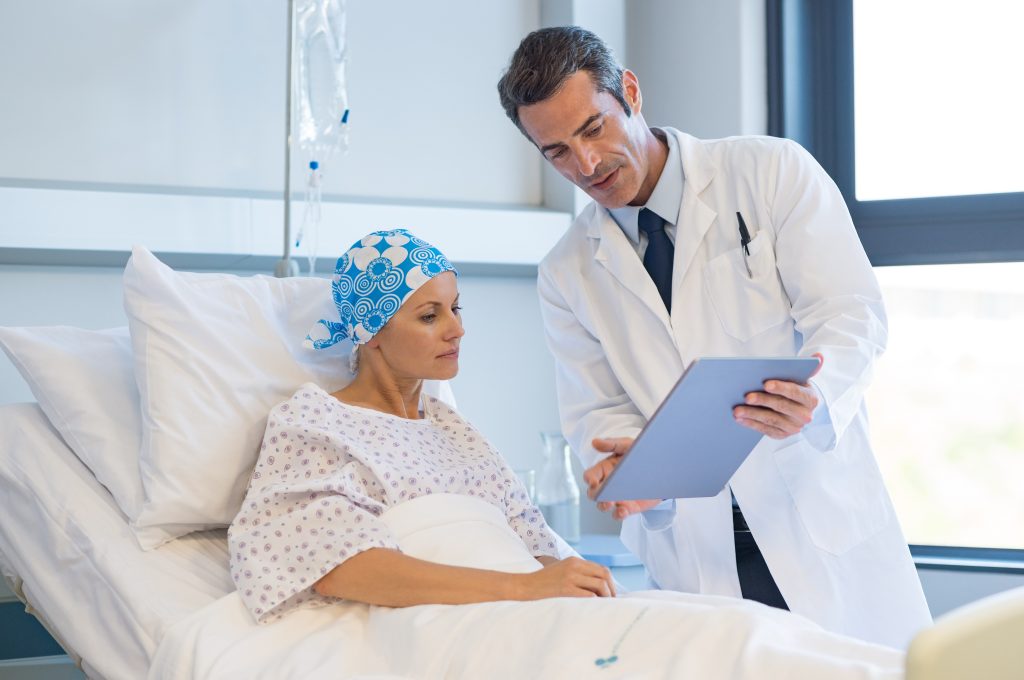
You can help yourself to get ready for cancer treatment by being physically active.
Being more active and exercising is one part of prehabilitation. This is a programme of advice and support that can help to prepare you for treatment. The other parts are eating a varied diet and looking after your mental wellbeing.
Focusing on these three areas, in whatever time you have before treatment starts can:
- help you feel more in control of your health
- cope better during treatment
- recover better
And by making it part of life with cancer, it can help you to live well in the long term.
Understandably you might be going through a lot when diagnosed with cancer. Focusing on these lifestyle changes might sound overwhelming. Everyone will have different needs and abilities, so do what you can and be kind to yourself.
Don’t hesitate to ask your healthcare team for advice – they will want to help you during this time.
What physical activity and exercise should I do?
It is not possible to have one set of exercise guidelines for everyone with cancer. How much physical activity you can do and at what level differs from person to person.
Being physically active means any movement that uses:
- your muscles
- more energy than when you’re resting
Being more active doesn’t have to mean joining a gym or an exercise class. It can also be:
- walking to the shops
- walking up the stairs
- gardening
- dancing
Where possible, it is more beneficial if you can aim to exercise as explained below.
Moderate and vigorous intensity
As a guide, physical activity can be of a:
- moderate intensity – you feel warmer and breathe faster, but you can still talk. For example, brisk walking, cycling, gardening or housework
- vigorous intensity – your heart rate raises, you start to sweat and feel out of breath. For example, running, aerobics and fast cycling or other types of exercise
All adults should try to do at least one of or a combination of the following ways of exercising:
- 150 minutes of moderate intensity activity per week. For example, 30 minutes five times per week
- 75 minutes of vigorous activity per week
You should also do strength building exercises twice a week. Examples are weight training or yoga.
You might not have been physically active for a long time. Starting now might feel impossible. But it can help to keep in mind that many people who felt the same have managed to do it and felt the benefits.
It is safe and recommended to exercise when you have cancer. It is also important to be more active in whatever time you have before cancer treatment. But you need to do physical activities that are right for you. So, speak to your GP or healthcare team for advice on your situation.
How do physical activity and exercise help?
Cancer and cancer treatments are often compared to running a marathon. In the same way that you should train before a marathon, it is important to increase your physical activity before cancer treatment. This includes surgery, radiotherapy or chemotherapy.
Research shows that you can improve your fitness and build muscle in as little as 2 weeks. So, it is worth being physically active even if there is only a short time before your cancer treatment.
The time you spend doing physical activity will give you a break from feeling overwhelmed by your cancer diagnosis. Research has shown that being active can help people with cancer to:
- reduce anxiety
- improve depression
- reduce fatigue by helping you to have more energy
- improve quality of life during and after cancer treatment
- prevent or improve lymphoedema (a type of swelling caused by treatment to lymph nodes)
- improve general physical functioning
- have better bowel and bladder control
A healthy weight
Being physically active together with a varied diet can also help you to keep to a healthy weight. Being very overweight or obese in the long term is also linked to developing 12 types of cancer.
Build muscle
Strengthening exercises will help build muscle. They include:
- resistance training
- weights
- yoga
- pilates
- swimming
Building muscle is important before your cancer treatment. Muscle mass is also linked with your diet. So, this is why you need to eat enough protein.
Heart problems and type 2 diabetes
Being physically active and doing exercise reduces your risk of heart problems and type 2 diabetes.
For most people with cancer, it is safe to be active during cancer treatment and after. Once treatment is over, you should try to stay active and get back to your normal activities as soon as possible.
Everyone is different in terms of how much physical activity they can do. And there are many types of cancer and treatments. Check with your GP or healthcare team if you’re not sure about a particular type of exercise.
What you can do
1. Keep a diary of your physical activity
- Compare your activity during a typical week with that in the guidelines.
- Think about ways that you can be more active.
2. Identify anything stopping you from being active
- Think about what is keeping you from becoming or staying physically active. For example, you might feel tired, down or not confident.
- Think about how you can overcome the barriers that are stopping you. Ask for help from your GP or healthcare team if you’re struggling.
3. Choose an activity that is local and that you would enjoy
- Join a local gym or dance class, go for a walk in a local park or a run in a nearby field.
- Ask a friend or family member to join you.
4. Stop smoking
- Think about the benefits of stopping smoking before treatment, as well as the long term. For example, it can reduce your risk of problems after treatment, prevent cancer in the long term or save you money.
- Not smoking will also make it easier to be more physically active without feeling breathless.
- Ask your GP or healthcare team for support in stopping smoking.
5. Treat exercise like your medication
- Be physically active daily and exercise regularly to get the best possible outcomes.
- Plan times of the day throughout the week when it will suit you best to exercise and when you are more likely to do it.



